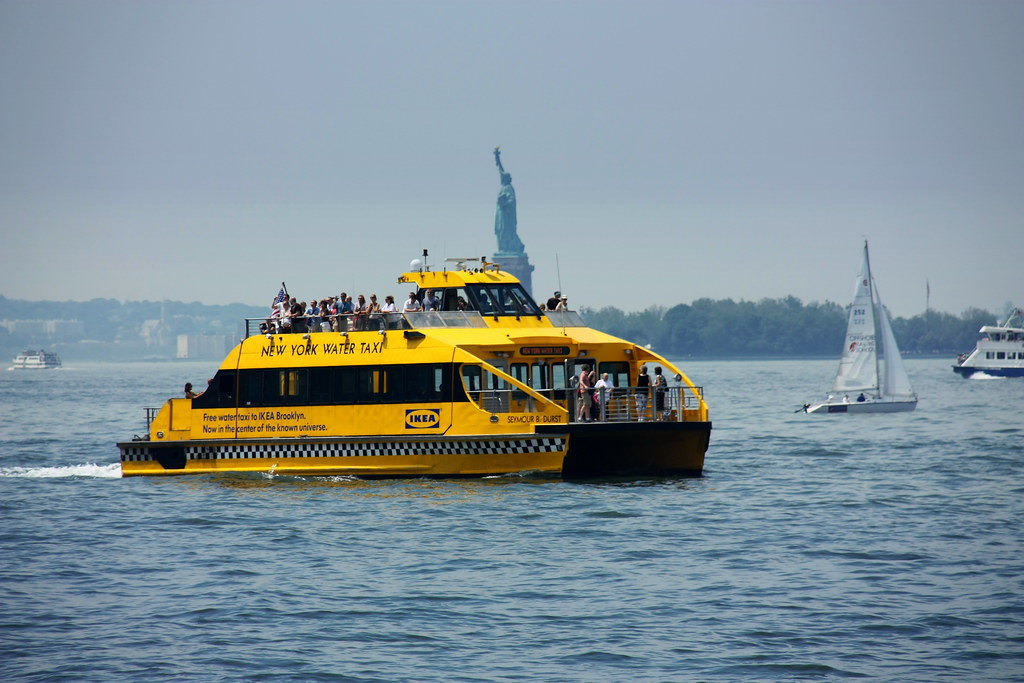
I moved to Brooklyn in 2006 after spending my youth in Manhattan. When it comes to cabs, I never realized how good Manhattanites have it until landing an in outer borough, and while I rarely rely on a taxi to get around the city, when I do, I find myself fearing the confrontation. Cabbies who pick up fares in Manhattan begrudgingly go to Park Slope and often don’t know the way. Even cabs in other parts of Brooklyn prefer a return ride to Manhattan that a quick jaunt between neighborhoods, and now and then, I’ll have to restort to threats of a 311 call to get my legally required ride.
That could all change under a new plan unveiled by Mayor Bloomberg during his State of the City speech this afternoon. Bloomberg has proposed allowing the city’s fleet of car services and black cabs to pick up passengers who hail them. It is, in essence, legalizing an activity that has gone on under the table for years and would be entirely voluntary. In exchange for this ability to pick up fares though, these car services would have to adopt a metered fare system and opt in to the city’s credit card cab program.
The basic details are straightforward enough. Later this year, the Taxi & Limousine Commission will issue its proposed guidelines, but the mayor said the program will be in place outside of Manhattan. He noted that while 95 percent of cab riders are picked up in Manhattan or the airports, 80 percent of New Yorkers live in the outer boroughs. It is high time, he said, for those residents to be able to get reliable cab service.
“It will give New Yorkers in all five boroughs another safe, reliable and convenient option for getting around. Because whether you’re standing on 42nd Street in Manhattan, or 42nd Street in Sunset Park, Brooklyn, or 42nd Street in Sunnyside, Queens, you ought to be able to hail a cab,” the mayor said during his speech in Staten Island.
The Gotham Gazette has already plunged into the issue, and they offer up their instant analysis. Included in the piece is feedback from the New York Taxi Workers Alliance. Already, those who organize yellow cab drivers feel threatened. “Legalizing an illegal activity because it’s been done for so long will immediately cut into fares, especially during the rush hours when yellow cab drivers who live in the outer boroughs pick up fares at the beginning or end of their shifts,” Bhairavi Desai said. “As liveries bring more riders into Manhattan, what guarantee do we have that the city will stop the illegal activities in Manhattan or the airports? Already, the city has turned a blind eye on such activity throughout Manhattan and the airports, which cuts deep into taxi driver incomes. This is a slippery slope with long-term implications.”
The problem though with the TWA is their willingness to turn a blind eye to other illegal activities. A cab driver must not refuse a fare to any destination within the five boroughs, but as I mentioned, I’ve had to restort to threats of a phone call to get my passage out of Manhattan. I know I’m not alone in that regard either. Many cab drivers won’t allow Brooklyn-, Queens- or Bronx-bound passengers into their cars and are openly hostile to those who leave the five boroughs. Bloomberg’s plan simply puts the rest of us on a better footing when it comes to cabs.
Livery cab owners feel that this move might cut into their business as well, and the opt-in nature of it doesn’t appeal to everyone. Still, no matter the future of this program, it highlights the inherent tensions between yellow cab drivers, the Taxi & Limousine Commission and the Mayor’s Office. David Yassky, the current TLC commission, is a Brooklynite through and through, and he knows the system needs fixing. Bloomberg’s plan could reform the taxi industry, and as taxi service spreads throughout the city, it could lead to fewer private cars on the road. That would be a forward transportation step indeed.






 Did you know that taxi fares increase on Sunday? Did you know that the increase goes to the MTA?
Did you know that taxi fares increase on Sunday? Did you know that the increase goes to the MTA? 